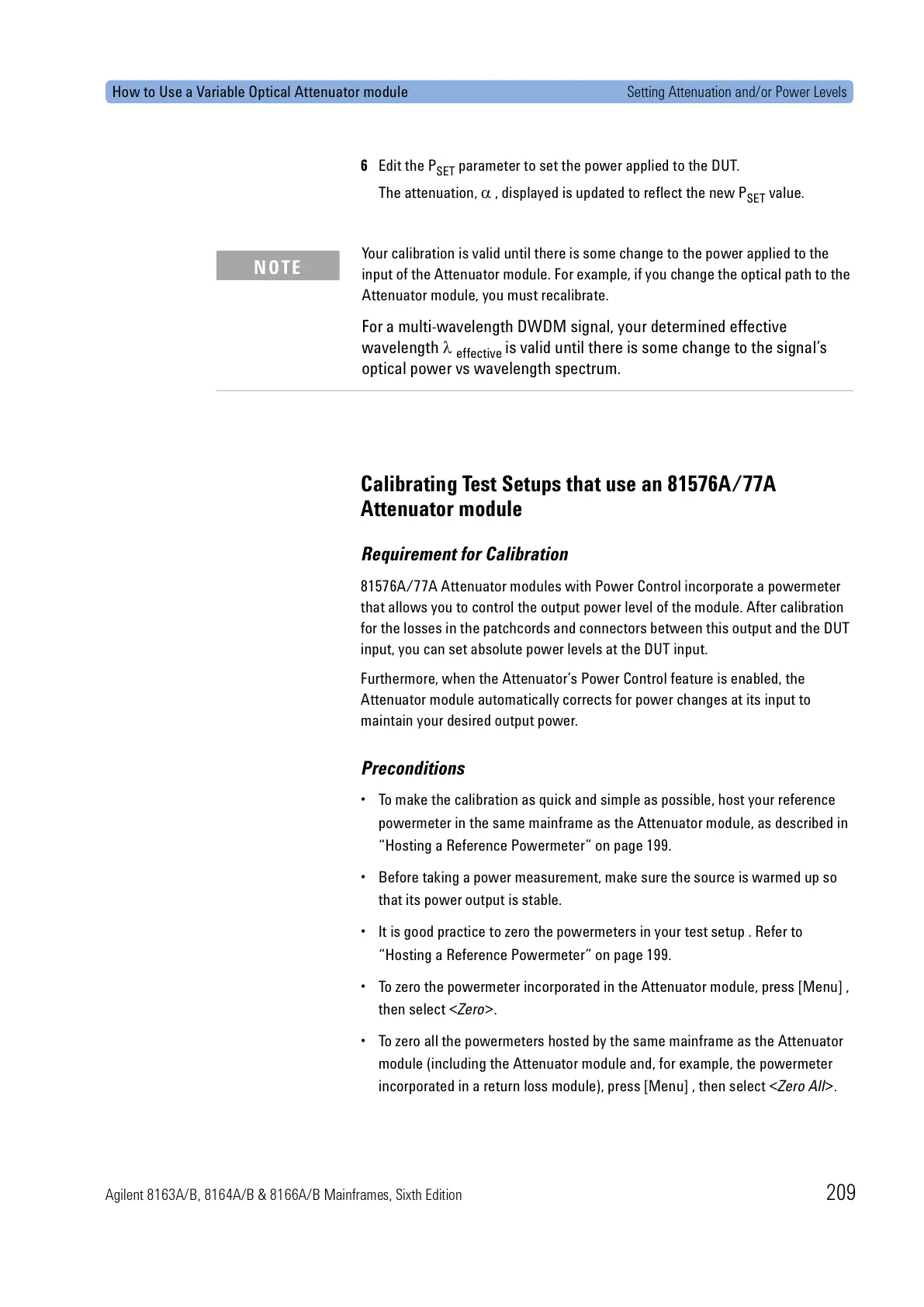How to Use a Variable Optical Attenuator module Setting Attenuation and/or Power Levels
Agilent 8163A/B, 8164A/B & 8166A/B Mainframes, Sixth Edition 209
6 Edit the P
SET
parameter to set the power applied to the DUT.
The attenuation, α , displayed is updated to reflect the new P
SET
value.
Calibrating Test Setups that use an 81576A/77A
Attenuator module
Requirement for Calibration
81576A/77A Attenuator modules with Power Control incorporate a powermeter
that allows you to control the output power level of the module. After calibration
for the losses in the patchcords and connectors between this output and the DUT
input, you can set absolute power levels at the DUT input.
Furthermore, when the Attenuator’s Power Control feature is enabled, the
Attenuator module automatically corrects for power changes at its input to
maintain your desired output power.
Preconditions
• To make the calibration as quick and simple as possible, host your reference
powermeter in the same mainframe as the Attenuator module, as described in
“Hosting a Reference Powermeter” on page 199.
• Before taking a power measurement, make sure the source is warmed up so
that its power output is stable.
• It is good practice to zero the powermeters in your test setup . Refer to
“Hosting a Reference Powermeter” on page 199.
• To zero the powermeter incorporated in the Attenuator module, press [Menu] ,
then select <Zero>.
• To zero all the powermeters hosted by the same mainframe as the Attenuator
module (including the Attenuator module and, for example, the powermeter
incorporated in a return loss module), press [Menu] , then select <Zero All>.
Your calibration is valid until there is some change to the power applied to the
input of the Attenuator module. For example, if you change the optical path to the
Attenuator module, you must recalibrate.
For a multi-wavelength DWDM signal, your determined effective
wavelength λ
effective
is valid until there is some change to the signal’s
optical power vs wavelength spectrum.
NOTE

